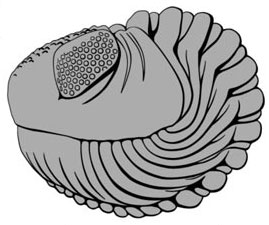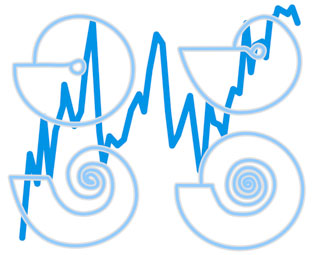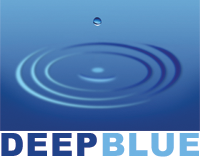|
|
 |
Naticonema lineata |
Hungry Hollow formation |
John Topor |
|
Submitted on 2007-03-04 by John Topor
Location (approximate): Arkona, Lambton, ON
Strat unit: Hungry Hollow formation
Submitter notes: This gastropod is common in the Hungry Hollow member. However, it is an exceptionally well preserved specimen. Many are found partially crushed or missing pieces of shell. They can range in size from a few millimeters up to about 35mm in diameter. This gastropod is about 31mm in diameter and 22mm high.
Photo title: Gastropod
Taxa present: Naticonema lineata
View full record
|
|
|
 |
Petrocrania hamiltoniae, Cornulites , Paraspirifer bownockeri |
Silica formation |
David Thompson |
|
Submitted on 2007-02-21 by David Thompson
Location (approximate): Sylvania, Lucas, OH
Strat unit: Silica formation
Submitter notes: This is a different Paraspirifer bownockeri then the previous two views of the same brachiopod. This example shows the scar and living tube of Cornulites worm that has been on this Paraspirifer a long time given the depth of the scar created. On the top is another large inarticulate brachiopod, Petrocrania hamiltoniae.
Photo title: Third example of Paraspirifer
Taxa present: Petrocrania hamiltoniae, Cornulites , Paraspirifer bownockeri
View full record
|
|
|
 |
Paraspirifer bownockeri, Cornulites , Aulopora microbuccinata |
Silica formation |
David Thompson |
|
Submitted on 2007-02-21 by David Thompson
Location (approximate): Sylvania, Lucas, OH
Strat unit: Silica formation
Submitter notes: This first view of this large & old Paraspirifer brachiopod shows the Left side of the fossil with several epifauna clearly visable. Near the hinge point is the scar of Cornulites sp. worm tube that create distinctive scars on both halves of the brachiopods valves. On the top bracial is Aulopra microbuccinata tabulate coral is quite visable & there is bryozoan intermixed with the corals but are hard to identify without higher magnification
Photo title: Silica Paraspirifer bownockeri and epifauna
Taxa present: Paraspirifer bownockeri, Cornulites , Aulopora microbuccinata
View full record
|
|
|
 |
Petrocrania hamiltoniae, Aulopora microbuccinata, Paraspirifer bownockeri |
Silica formation |
David Thompson |
|
Submitted on 2007-02-21 by David Thompson
Location (approximate): Sylvania, Lucas, OH
Strat unit: Silica formation
Submitter notes: This is the right side of the same Paraspirifer bownockeri showing additional epifauna. Again the top is heavily infested with Aulopora tabulate coral but also there is a scared area from an early injury & this has made a snug spot for the inarticulate brachiopod, Petrocrania hamiltoniae, to take up residence.
Photo title: Another view of same paraspirifer
Taxa present: Petrocrania hamiltoniae, Aulopora microbuccinata, Paraspirifer bownockeri
View full record
|
|
|
 |
Platyceras bucculentum, Philhedra crenistriata |
Silica formation |
David Thompson |
|
Submitted on 2007-02-20 by David Thompson
Location (approximate): Milan, Washtenaw, MI
Strat unit: Silica formation
Submitter notes: This Platyceras has an inarticulate Brachiopod, Philhedra crenistriata, living on it. In the Devonian seas, if you were solid, someone started living on you quickly. This inarticulate has clear lines radiating from the center as a diagnostic feature and this shows clearly in this picture.
Photo title: Snail with inarticulate brachiopod
Taxa present: Platyceras bucculentum, Philhedra crenistriata
View full record
|
|
|
 |
Botryllopora socialis, Platyceras bucculentum |
Silica formation |
David Thompson |
|
Submitted on 2007-02-20 by David Thompson
Location (approximate): Milan, Washtenaw, MI
Strat unit: Silica formation
Submitter notes: This is a Platyceras with the bryozoan, Botryllopora socialis, encrusting it. Elsewhere on this site John Topor shows another example of this unique 'star-shaped' bryozoan on matrix. Here it is happily living on a snail. A 10 cent piece is for scale.
Photo title: Snail with Bryozoa
Taxa present: Botryllopora socialis, Platyceras bucculentum
View full record
|
|
|
 |
Phyllocarid mandible |
Silica formation |
David Thompson |
|
Submitted on 2007-02-19 by David Thompson
Location (approximate): Paulding, Paulding, OH
Strat unit: Silica formation
Submitter notes: The Phyllocarids were large shrimp-like crustaceans with four species identified in the Silica Formation. These mandibles are often found with nothing else to identify the species. This is a complete set from one side of the animal. 10 cent piece for scale.
Photo title: Phyllocarid 'jaw'
Taxa present: Phyllocarid mandible
View full record
|
|
|
 |
Lipsanocystis traversensis |
Thunder Bay formation |
David Thompson |
|
Submitted on 2007-02-19 by David Thompson
Location (approximate): Alpena, Alpena, MI
Strat unit: Thunder Bay formation
Submitter notes: This Cystoid shows a considerable tail portion in addition to the body of this cystoid. The background is finely broken Bryzoan fronds. This is from the Thunder Bay Limestone near Partridge Point, Alpena. The U.S. 10 cent pc. is for scale. The body is 2 cm long with the additional tail just about 3 cm.
Photo title: Devonian Cystoid
Taxa present: Lipsanocystis traversensis
View full record
|
|
|
 |
Phacops (Eldredgeops?) iowensis southworthi, Eldredgeops (Phacops) rana rana |
Hungry Hollow formation |
Mike Topor |
|
Submitted on 2007-02-18 by Mike Topor
Location (approximate): Arkona, Lambton, ON
Strat unit: Hungry Hollow formation
Submitter notes: Phacops iowensis southworthi eyes always contain 13 dorsoventral files and is only known from the Hungry Hollow member of the Widder formation where it is very rare. (The holotype is only a cephalon) The species of P. iowensis and E. rana co-exist in only a few Hamilton formations. This cephalon of P. iowensis southworthi is preserved a few millimeters atop a nearly complete specimen of E. rana rana. The cephalon measures 35mm wide and 23mm high. The E. Rana rana measures 35mm long
Photo title: Trilobite Association
Taxa present: Phacops (Eldredgeops?) iowensis southworthi, Eldredgeops (Phacops) rana rana
View full record
|
|
|
 |
Corocrinus(?) calypso |
Arkona formation |
Mike Topor |
|
Submitted on 2007-02-18 by Mike Topor
Location (approximate): Arkona, Lambton, ON
Strat unit: Arkona formation
Submitter notes: Corocrinus is the second most common crinoid in the formation next to Arthroacantha. This specimen shows the arm structure. The plates of the calyx are difficult to see because of pyrite. The crown measures 45mm high and 55mm wide.
Photo title: Crinoid Crown
Taxa present: Corocrinus(?) calypso
View full record
|
|
|
 |
Corocrinus(?) calypso |
Arkona formation |
Mike Topor |
|
Submitted on 2007-02-18 by Mike Topor
Location (approximate): Arkona, Lambton, ON
Strat unit: Arkona formation
Submitter notes: Corocrinus is the second most common crinoid in the formation behind Arthroacantha. It's distinctive ornamentation and three notches on the basals are characteristic of the crinoid. However, it's placement needs revision. The specimen is 22mm high and 15mm wide
Photo title: Crinoid Calyx
Taxa present: Corocrinus(?) calypso
View full record
|
|
|
 |
Hyperoblastus filosa |
Hungry Hollow formation |
Mike Topor |
|
Submitted on 2007-02-18 by Mike Topor
Location (approximate): Arkona, Lambton, ON
Strat unit: Hungry Hollow formation
Submitter notes: The preservation of blastoids in the formation is exceptional. Clusters are very rare! This group of five larger specimens is indeed a find. The blastoids range in size from 10 - 13mm in height.
Photo title: Blastoid Cluster
Taxa present: Hyperoblastus filosa
View full record
|
|
|
 |
Gennaeocrinus mourantae |
Arkona formation |
Mike Topor |
|
Submitted on 2007-02-18 by Mike Topor
Location (approximate): Arkona, Lambton, ON
Strat unit: Arkona formation
Submitter notes: Certainly one of the most attractive crinoids of the formation. Very Rare! It was described by Winifred Goldring on a specimen that had regenerated arms.
Photo title: Crinoid Crown
Taxa present: Gennaeocrinus mourantae
View full record
|
|
|
 |
Heliophyllum juvene |
Hungry Hollow formation |
Mike Topor |
|
Submitted on 2007-02-18 by Mike Topor
Location (approximate): Arkona, Lambton, ON
Strat unit: Hungry Hollow formation
Submitter notes: H. juvene is much smaller in size and not as common as Heliophyllum halli halli in the Hungry Hollow member. The largest of the three specimens in the photo is 40mm long and 15mm in diameter. The smallest is about 15mm long and wide.
Photo title: Horn Corals
Taxa present: Heliophyllum juvene
View full record
|
|
|
 |
Aulocystis ramosa |
Arkona formation |
Mike Topor |
|
Submitted on 2007-02-18 by Mike Topor
Location (approximate): Arkona, Lambton, ON
Strat unit: Arkona formation
Submitter notes: This tabulate coral is restricted to the upper part of the formation. The largest of the five specimens shown is 40mm high by 30mm wide. The smallest is 25mm by 25mm.
Photo title: Tabulate Coral
Taxa present: Aulocystis ramosa
View full record
|
|
|
 |
Antholites speciosus |
Hungry Hollow formation |
Mike Topor |
|
Submitted on 2007-02-18 by Mike Topor
Location (approximate): Arkona, Lambton, ON
Strat unit: Hungry Hollow formation
Submitter notes: These tabulate corals are commonly attached to crinoid stems which probably enabled them to stay above the sea floor to improve their chances for food. These specimens are approximately 25mm in diameter.
Photo title: Tabulate Coral
Taxa present: Antholites speciosus
View full record
|
|
|
 |
Cladochonus antiquus |
Hungry Hollow formation |
Mike Topor |
|
Submitted on 2007-02-18 by Mike Topor
Location (approximate): Arkona, Lambton, ON
Strat unit: Hungry Hollow formation
Submitter notes: These somewhat common corals, like Antholites, are found attached to crinoid stems. Favorite hosts are the crinoids' Dolatocrinus and Megistocrinus. On some specimens, Cladochonus deforms the stem of it's host. It is not known how destructive this may have been, if at all, to the life of the crinoid host. The largest of the three pictured specimens is 30 X 40mm. The smallest colony is 22mm in diameter.
Photo title: Tabulate Corals
Taxa present: Cladochonus antiquus
View full record
|
|
|
 |
Microcyclus thedfordensis, Eliasopora stellatum, Aulopora sp., Eldredgeops sp. |
Arkona formation |
Mike Topor |
|
Submitted on 2007-02-18 by Mike Topor
Location (approximate): Arkona, Lambton, ON
Strat unit: Arkona formation
Submitter notes: Top row: Contrasts a very large specimen (20mm) with a very small one (6mm) and 2 average size (12mm) specimens showing top and bottom views.
Middle row: First specimen has turned-up margin; the second shows rejuvenation; the third is twins (two growing together); The fourth is encrusted with the Bryozoan, Eliasopora. The fifth is encrusted with Aulopora.
Third row: Shows various attachments; #'s 1&2 are attached to trilobite fragments. #3 is attached to a tiny chonetid brachiopod. #4 is attached to a small crinoid columnal, and #5 is attached to a Pelecypod fragment.
Photo title: Button Corals
Taxa present: Microcyclus thedfordensis, Eliasopora stellatum, Aulopora sp., Eldredgeops sp.
View full record
|
|
|
 |
Xenocyathellus thedfordensis |
Arkona formation |
Mike Topor |
|
Submitted on 2007-02-18 by Mike Topor
Location (approximate): Thedford, Lambton, ON
Strat unit: Arkona formation
Submitter notes: Occurs high in the Arkona formation in the same horizon as the button coral Microcyclus, but not as numerous. Because of it's shape it's often called the 'slipper coral'. The largest of the six specimens measures 13mm long and nearly as wide.
Photo title: Coral
Taxa present: Xenocyathellus thedfordensis
View full record
|
|
|
 |
Koenenites cooperi |
Squaw Bay formation |
Joseph Koniecki |
|
Submitted on 2007-02-18 by Joseph Koniecki
Location (approximate): Alpena, Alpena, MI
Strat unit: Squaw Bay formation
Submitter notes:
Photo title: Ammonites
Taxa present: Koenenites cooperi
View full record
|










































